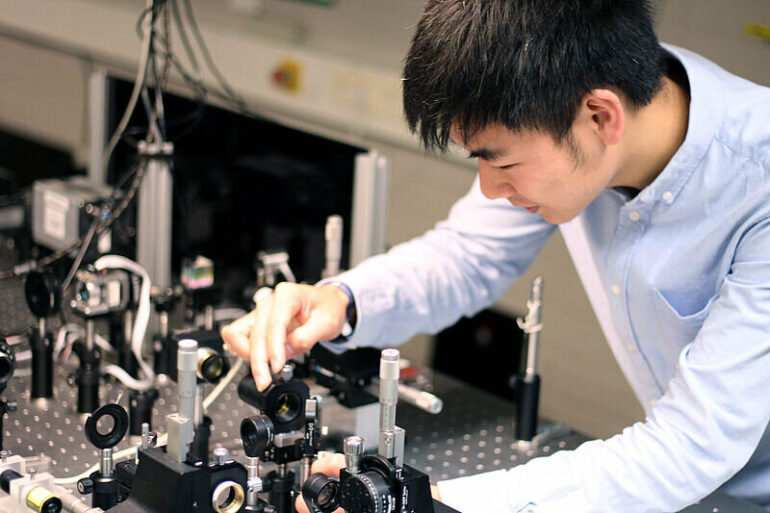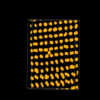Light not only plays a key role as an information carrier for optical computer chips, particularly for the next generation of quantum computers. Its lossless guidance around sharp corners on tiny chips and the precise control of its interaction with other light are the focus of research worldwide. Scientists at Paderborn University have now demonstrated the spatial confinement of a light wave to a point smaller than the wavelength in a topological photonic crystal. These are artificial electromagnetic materials that facilitate robust manipulation of light. The state is protected by special properties and is important for quantum chips, for example. The findings have now been published in Science Advances.
Topological crystals function on the basis of specific structures, the properties of which remain largely unaffected by disturbances and deviations. While in normal photonic crystals the effects needed for light manipulation are fragile and can be affected by defects in the material structure, for example, in topological photonic crystals, the conditions are protected from this. The topological structures allow properties such as unidirectional light propagation and increased robustness for guiding photons, features that are crucial for future light-based technologies.
Photonic crystals influence the propagation of electromagnetic waves with the help of an optical band gap for photons, which blocks the movement of light in certain directions. Scattering usually occurs—some photons are reflected back, while others are reflected away. “With topological light states that span an extended range of photonic crystals, you can prevent this. In normal optical waveguides and fibers, back reflection poses a major problem because it leads to unwanted feedback. Loss during propagation hinders large-scale integration in optical chips, in which photons are responsible for transmitting information. With the help of topological photonic crystals, novel unidirectional waveguides can be achieved that transmit light without any back reflection, even in the presence of arbitrarily large disorder,” explains Professor Thomas Zentgraf, head of the Ultrafast Nanophotonics research group at Paderborn University.
The concept, which has its origins in solid-state physics, has already led to numerous applications, including robust light transmission, topological delay lines, topological lasers and quantum interference. “It was also recently proven that topological photonic crystals based on a weak topology with a crystal dislocation in the periodic structure also exhibit these special properties and also support what are known as topologically-protected strongly spatially localized light states. When something is topologically protected, any changes in the parameters do not affect the protected properties. Localized light states are extremely useful for non-linear amplification, miniaturization of photonic components and integration of photonic quantum chips,” adds Zentgraf. In this context, weak topological states are special states for the light that result not only from the topological band structure, but also from the formation of the crystal structure.
In a joint experiment, researchers from Paderborn University and RWTH Aachen University used a special near-field optical microscope to demonstrate the existence of such strongly localized light states in topological structures. “We showed that the versatility of weak topology can produce a strongly spatially localized optical field in an intentionally induced structural dislocation,” explains Jinlong Lu, a Ph.D. student in Zentgraf’s group and lead author of the paper. “Our study demonstrates a viable strategy for achieving a topologically-protected, localized zero-dimensional state for light,” adds Zentgraf. With their work, the researchers have proven that near-field microscopy is a valuable tool for characterizing topological structures with nanoscale resolution at optical frequencies.
The findings provide a basis for the use of strongly localized optical light states based on weak topology. Phase-change materials with a tunable refractive index could therefore also be used for the nanostructures used in the experiment to produce robust and active topological photonic elements. “We’re now working on concepts to equip the dislocation centers in the crystal structure with special quantum emitters for single photon generation,” says Zentgraf, adding: “These could then be used in future optical quantum computers, for which single photon generation plays an important role.”
More information:
Jinlong Lu et al, Observing 0D subwavelength-localized modes at ~100 THz protected by weak topology, Science Advances (2021). DOI: 10.1126/sciadv.abl3903
Provided by
Paderborn University
Citation:
Artificial material protects light states on smallest length scales (2021, December 3)



